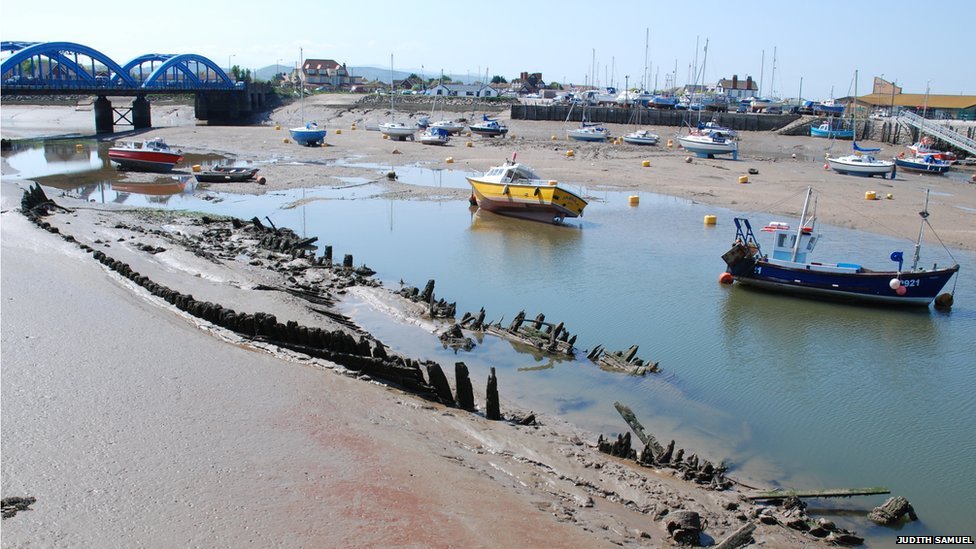
The remains of this vessel lie on a mud bank in Rhyl's Foryd Harbour.
The City of Ottawa was built as a three-masted vessel with square rigging in 1860 in Quebec, Canada, by Jean Elie Gingras. The ship was named the City of Ottawa to celebrate Queen Victoria's choice of a new Canadian capital just three years earlier. The City of Ottawa traded to various English ports and Australia, Asia, South America, the United States of America and Canada. The ship was brought to Rhyl in 1906 after being damaged in a storm and, soon afterwards, was abandoned as uneconomic to salvage further.
In 1906 the City of Ottawa was sold to Robert Horton and Co, Salvage Merchants of Rhyl, for her timber and metals. They also bought iron and steel ships for breaking up like the Fearless in 1905. Apparently, they got into trouble for using explosives in order to salvage the metal. Like the City of Ottawa, the Fearless become stuck on a sandbank while being towed - much to the amazement of Rhyl's holidaymakers.
A painting by Judith Samuels [who has also written a book about the City of
Ottawa] depicts her recreation of the Ottawa being towed by a steam tug to her
last berth in Rhyl Harbour (known as Foryd). By then she would have lost her masts, as she had
been used as a storage ship by the Royal Navy in Portsmouth and Portland
harbours for the previous 10 years. See more
here (in Welsh).
The ship's voyages between 1883-5 include South America,
Sri Lanka, Australia, Mauritius, Barbados, and then home via Mobile in
the USA. She was damaged twice, once in the "risky passage"
round the south of Australia, and once coming back home across the
Atlantic, when she had to jettison her deck load.
At Rhyl, she was supposed to be broken up, but part of the ship survived. The remains of the vessel have lain on a sandbar in the harbour, with only a few timbers now visible, although part of the ship is buried under sand. Even so, it is almost the only survivor of what was a common type of trading sailing vessel - and there is interest from Canada to preserve it.
Image of surviving timbers of the City of Ottawa:

In January 2007, Denbighshire Council began a major regeneration programme for the waterfront at Rhyl including a new road constructed from in front of the May Quay public house to the former timber yard, repairs to the timber yard quay wall, the creation of a secure boat storage area with wash-down facilities and a new cycle route link. In May 2007, the Council requested the removal of four sunken vessels to facilitate dredging and the development of the marina. Subsequently an initiative has been launched to recover part of the vessel, possibly consisting of up to 200 tons of timber, for a display in the Quebec City Hall. In November 2007, Denbighshire Council began a feasibility study to assess the desirability of preserve all or part of the wreck. In February 2008, a news item revealed that £50,000 of European funding may have been withdrawn because of delays in developing a feasible plan for recovering part of the wreck. The work was completed by 2014 and the wreck has not been disturbed significantly.